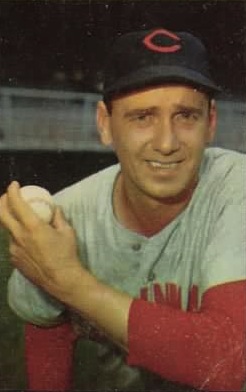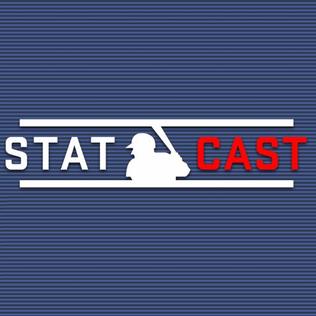
A spitball is an illegal baseball pitch in which the ball has been altered by the application of a foreign substance such as saliva or petroleum jelly. This technique alters the wind resistance and weight on one side of the ball, causing it to move in an atypical manner. It may also cause the ball to "slip" out of the pitcher's fingers without the usual spin that accompanies a pitch. In this sense, a spitball can be thought of as a fastball with knuckleball action. Alternative names for the spitball are spitter, mud ball, shine ball, supersinker, or vaseline ball. A spitball technically differs from an emery ball, in which the surface of the ball is cut or abraded. Saliva or Vaseline smooths the baseball, while the emery paper roughens it. The general term for altering the ball in any way is doctoring.

The fastball is the most common type of pitch thrown by pitchers in baseball and softball. Its distinctive feature is its high speed. "Power pitchers," such as former American major leaguers Nolan Ryan and Roger Clemens, rely the speed of the fastball to prevent the ball from being hit and throw fastballs at speeds of 95–105 miles per hour (153–169 km/h) (officially) and up to 108.1 miles per hour (174.0 km/h) (unofficially). As an alternative to the fastball, pitchers can put movement on slower thrown balls, or throw them towards the inside or outside of home plate where batters cannot easily reach it.

The forkball is a type of pitch in baseball. Related to the split-finger fastball, the forkball is held between the first two fingers and thrown hard, snapping the wrist.

A changeup is a type of pitch in baseball and fastpitch softball.

In baseball, a starting pitcher or starter is the first pitcher in the game for each team. A pitcher is credited with a game started if they throw the first pitch to the opponent's first batter of a game. Starting pitchers are expected to pitch for a significant portion of the game, although their ability to do this depends on many factors, including effectiveness, stamina, health, and strategy.

In baseball, the pitch is the act of throwing the baseball toward home plate to start a play. The term comes from the Knickerbocker Rules. Originally, the ball had to be thrown underhand, much like "pitching in horseshoes". Overhand pitching was not allowed in baseball until 1884.

In baseball, a circle changeup or circle change is a pitch thrown with a grip that includes a circle formation, hence the name circle changeup. The circle is formed by making a circle with the index finger, holding the thumb at the bottom of the ball parallel to the middle finger and holding the ball far out in the hand. The ball is thrown turning the palm out.

In baseball, a cut fastball or cutter is a type of fastball that breaks toward the pitcher's glove-hand side, as it reaches home plate. This pitch is somewhere between a slider and a four-seam fastball, as it is usually thrown faster than a slider but with more movement than a typical fastball. Some pitchers use a cutter to prevent hitters from expecting their regular fastballs. A common technique for throwing a cutter is to use a four-seam fastball grip with the baseball set slightly off center in the hand. A batter hitting a cutter pitch often achieves only soft contact and an easy out due to the pitch's movement keeping the ball away from the bat's sweet spot. The cutter is typically 2–5 mph slower than a pitcher's four-seam fastball. In 2010, the average pitch classified as a cutter by PITCHf/x thrown by a right-handed pitcher was 88.6 mph; the average two-seamer was 90.97 mph.
In baseball, an off-speed pitch is a pitch thrown at a slower speed than a fastball. Breaking balls and changeups are the two most common types of off-speed pitches. Very slow pitches which require the batter to provide most of the power on contact through bat speed are known as "junk" and include the knuckleball and the Eephus pitch, a sort of extreme changeup. The specific goals of off-speed pitches may vary, but in general they are used to disrupt the batter's timing, thereby lessening his chances of hitting the ball solidly or at all. Virtually all professional pitchers have at least one off-speed pitch in their repertoire. Despite the fact that most of these pitches break in some way, batters are sometimes able to anticipate them due to hints that the pitcher gives, such as changes in arm angle, arm speed, or placement of fingers.

A gyroball is a type of baseball pitch used primarily by players in Japan. It is thrown with a spiral-like spin, so that there is no Magnus force on the ball as it arrives at home plate. The gyroball is sometimes confused with the shuuto, another pitch used in Japan.

Kenneth David Raffensberger was an American starting pitcher in Major League Baseball (MLB). From 1939 through 1954, he played for the St. Louis Cardinals (1939), Chicago Cubs (1940–41), Philadelphia Phillies (1943–47), and Cincinnati Reds/Redlegs (1947–54). Raffensberger batted right-handed and threw left-handed.

Ubaldo Jiménez García is a Dominican-American former professional baseball pitcher. He played in Major League Baseball (MLB) for the Colorado Rockies, Cleveland Indians and Baltimore Orioles. Jiménez was an MLB All-Star in 2010. That year, he pitched the first no-hitter in Rockies' franchise history.
PITCHf/x is a system created and maintained by Sportvision that tracks the speeds and trajectories of pitched baseballs. This system, which made its debut in the 2006 Major League Baseball (MLB) postseason, is installed in every MLB stadium. The data from the system is often used by broadcasters to show a visual representation of the pitch and whether or not a pitch entered the strike zone. PITCHf/x is also used to determine the type of pitch thrown, such as a fastball, curveball or slider. MLB uses the data from PITCHf/x in its Zone Evaluation System which is used to grade and provide feedback to umpires. Sabermetric analysts note that umpire accuracy has improved after the technology was introduced to MLB.

Albertín Aroldis Chapman de la Cruz is a Cuban-born American professional baseball relief pitcher for the Pittsburgh Pirates of Major League Baseball (MLB). He has previously played in MLB for the Cincinnati Reds, New York Yankees, Chicago Cubs, Kansas City Royals, and Texas Rangers and in the Cuban National Series for Holguín. Chapman bats and throws left-handed, and is nicknamed "the Cuban Missile" or "the Cuban Flame Thrower".

The 12–6 curveball is one of the types of pitches thrown in baseball. It is categorized as a breaking ball because of its downward break. The 12–6 curveball, unlike the normal curveball, breaks in a downward motion in a straight line. This explains the name "12–6", because the break of the pitch refers to the ball breaking from the number 12 to the number 6 on a clock. While the 11–5 and 2–8 variations are very effective pitches, they are less effective than a true 12–6, because the ball will break into the heart of the bat more readily.
In baseball, the vulcan changeup pitch is a type of changeup; it closely resembles a forkball and split-finger fastball. It is a variation of the circle changeup, and when mastered can be extremely effective. Much like a forkball, the vulcan is gripped between two fingers on the hand, but rather than the middle and index finger as with the forkball or split-finger fastball, it sits in between the middle and ring fingers to make a v-shape when releasing to the catcher. It is thrown with fastball arm speed but by pronating the hand by turning the thumb down, to get good downward movement on it.
The fosh, fosh ball, or fosh change is a seldom used pitch in Major League Baseball described as "a cross between a split-fingered pitch and a straight change-up". It is designed to fool a batter expecting a fastball to have to contend with a slower pitch. The pitch has a grip like a fastball, but the index and middle fingers are spread slightly across the baseball, and the ring and little finger wrap around the side of the ball. If thrown properly, it has characteristics like a breaking change-up or an off-speed split-finger fastball.

Héctor Neris is a Dominican professional baseball pitcher for the Chicago Cubs of Major League Baseball (MLB). He has previously played in MLB for the Philadelphia Phillies and Houston Astros. He was signed as a free agent by the Phillies in 2010, and made his MLB debut with them in 2014.

Statcast is a high-speed, high-accuracy, automated tool developed to analyze player movements and athletic abilities in Major League Baseball (MLB).
Camilo Doval is a Dominican professional baseball pitcher for the San Francisco Giants of Major League Baseball (MLB). He signed with the Giants as a free agent in 2015, and made his MLB debut with them in 2021. His fastball has reached 104.5 miles per hour (168.2 km/h).















